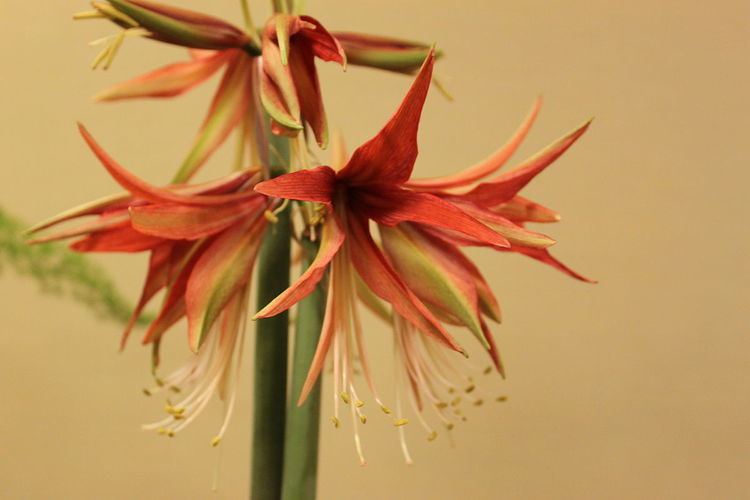Clade Monocots | Clade Angiosperms | |
 | ||
Similar Hippeastrum correiense, Rhodolirium, Hippeastrum miniatum, Hippeastrum psittacinum, Hippeastrum evansiae | ||
Omphalissa is an unaccepted subgenus of genus Hippeastrum, within the Amaryllidaceae family. Originally described by Richard Anthony Salisbury in 1866.
Contents
Description
Robust habit, two to four large flowers. Perianth with a short tube(< 4 cm), paraperigonium curved closing the throat by a distinct neck. Stigma trifid or capitate, lobes > 2 mm. Spathe slit to the base. Ribbon-like leaves, 2.5 to 5 cm broad. Many dry, flat seeds.
Taxonomy
Salisbury originally described the Omphalissa as a subgroup of the Zephyrantheae, then a tribe within the Amaryllidaceae, in which he included Amaryllis (now Hippeastrum) aulica and A. calyptrata. This was subsequently more formally defined by John Gilbert Baker in 1888, as a subgenus of Hippeastrum with six species. Baker's six species were;
Other selected species of Hippeastrum
Ecology
Contains the epiphytic species of Hippeastrum.
